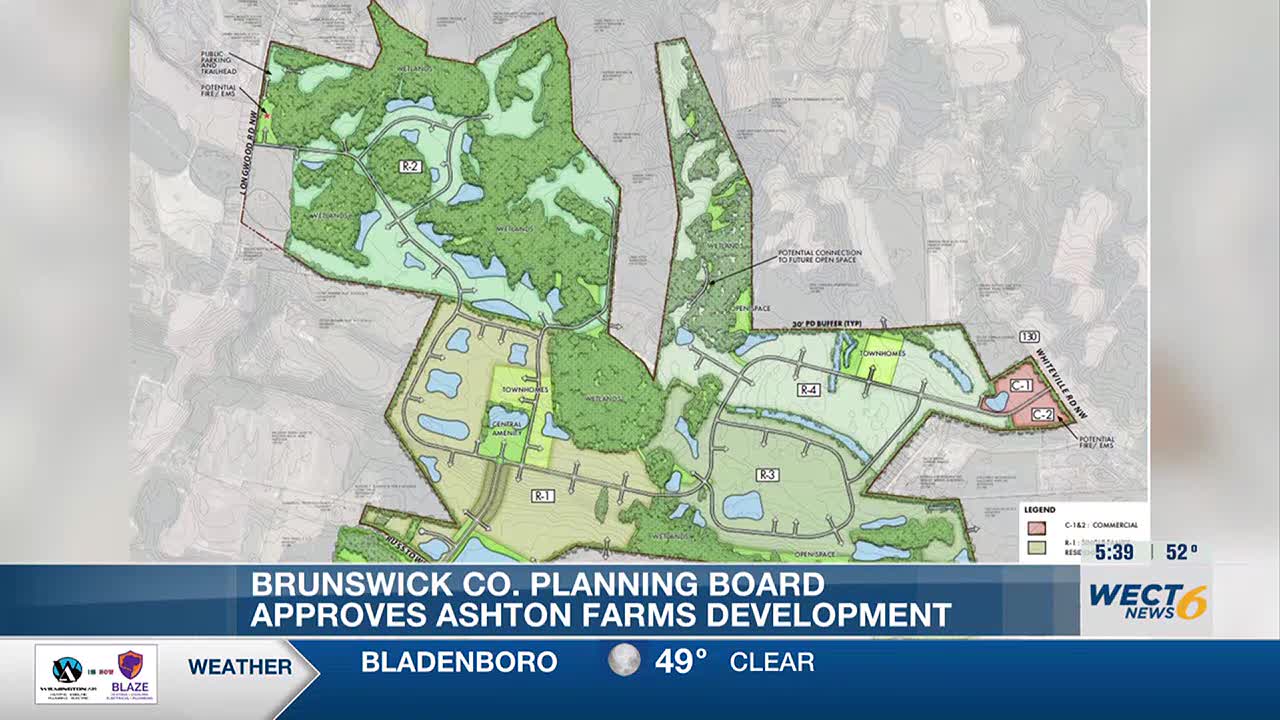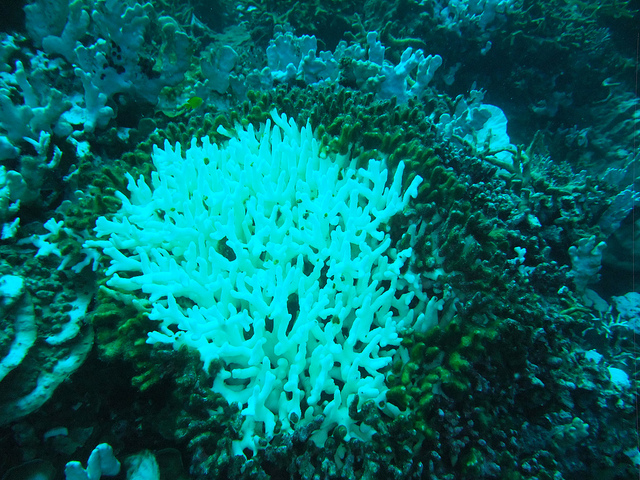Report on the Cessation of Conservation Efforts for Sledge Forest and Implications for Sustainable Development Goals (SDGs)
Introduction and Background
A recent development in New Hanover County, North Carolina, highlights a significant conflict between urban expansion and environmental preservation, directly impacting the achievement of several United Nations Sustainable Development Goals (SDGs). The nonprofit organization Unique Places to Save has announced the termination of its campaign to acquire and conserve the 4,000-acre Sledge Forest. This decision was precipitated by an unsuccessful application for funding from the North Carolina Land and Water Fund (NCLWF). The cessation of this conservation initiative opens the path for a proposed large-scale residential development by Copper Builders, which plans to construct 4,000 homes on the site while conserving approximately 75% of the land.
Sledge Forest: An Ecosystem of Critical Importance
Sledge Forest is a vital natural asset whose potential loss poses a direct threat to local and regional sustainability targets. Its ecological significance is underscored by the following attributes:
- Designation: Recognized as a “threatened forest” by the Old Growth Forest Network.
- Location: Spans over 4,000 acres along the Northeast Cape Fear River.
- Ecosystem Diversity: Comprises extensive wetlands, including tidal marsh and swamp ecosystems.
- Biodiversity Hotspot: Features upland areas with longleaf pine and provides critical habitats for numerous rare species.
Analysis of Conflict through the Lens of Sustainable Development Goals
The situation surrounding Sledge Forest presents a critical case study on the challenges of balancing development with sustainability. The potential development directly contravenes the objectives of several key SDGs.
-
SDG 15: Life on Land
This goal is most acutely impacted. The proposed development jeopardizes the core targets of SDG 15, which call for the conservation, restoration, and sustainable use of terrestrial ecosystems.
- Target 15.1 & 15.2: The project threatens the integrity of a significant forest and wetland ecosystem, undermining efforts to promote sustainable forest management and halt deforestation.
- Target 15.5: Development would lead to irreversible habitat loss, directly threatening the rare species residing in Sledge Forest and contributing to a decline in biodiversity.
-
SDG 14: Life Below Water
The forest’s location along the Northeast Cape Fear River and its extensive wetlands make it crucial for aquatic health, linking its fate to SDG 14.
- Target 14.2: The conservation of the forest’s tidal marshes and swamps is essential for protecting and managing coastal and marine ecosystems, filtering runoff, and preventing pollution from reaching the river.
-
SDG 11: Sustainable Cities and Communities
While the development aims to provide housing, it raises questions about the sustainability and resilience of community growth, a central theme of SDG 11.
- Target 11.4: The project represents a failure to strengthen efforts to protect and safeguard the world’s cultural and natural heritage.
- Community Impact: Widespread community opposition, citing concerns over traffic and the loss of natural resources, indicates that the development may not align with the goal of creating inclusive, safe, and sustainable human settlements.
-
SDG 13: Climate Action
The conservation of large forest tracts like Sledge Forest is a fundamental strategy for climate change mitigation, a core objective of SDG 13.
- Carbon Sequestration: The degradation of this 4,000-acre forest would release significant carbon stores and eliminate a vital natural carbon sink, undermining climate action efforts.
Stakeholder Positions and Future Outlook
The failure to secure conservation funding underscores a breakdown in the multi-stakeholder partnerships (SDG 17) required to achieve sustainability. Dr. Christine Pickens, Executive Director of Unique Places to Save, expressed disappointment but reaffirmed the organization’s unwavering commitment to conservation principles, encouraging future efforts to protect the “irreplaceable natural resource.” Despite the setback for conservationists, the organization’s statement indicates a willingness to support subsequent initiatives, leaving a narrow window for alternative solutions that could better align with the Sustainable Development Goals.
Analysis of Sustainable Development Goals in the Article
1. Which SDGs are addressed or connected to the issues highlighted in the article?
-
SDG 15: Life on Land
This is the most prominent SDG in the article. The core issue revolves around the conservation of Sledge Forest, a 4000-acre terrestrial ecosystem. The article highlights its value as a habitat with “extensive wetlands… upland areas featuring longleaf pine, and vital habitats for rare species.” The threat of development and the efforts of the nonprofit “Unique Places to Save” to protect this land directly align with the goal of protecting terrestrial ecosystems and halting biodiversity loss.
-
SDG 11: Sustainable Cities and Communities
The plan by “Copper Builders” to develop 4,000 homes in the forest connects the issue to sustainable urban development. The conflict between this large-scale housing project and the preservation of a significant natural area is a classic challenge in sustainable urban planning. The “community opposition” mentioned also relates to the goal of creating inclusive and participatory planning processes for human settlements.
-
SDG 14: Life Below Water
The article states that Sledge Forest is located “along the Northeast Cape Fear River” and contains “extensive wetlands, including tidal marsh and swamp.” Tidal marshes are critical coastal ecosystems that bridge land and sea. Protecting these areas from the impacts of development is essential for the health of coastal and marine environments, directly linking the issue to SDG 14.
-
SDG 17: Partnerships for the Goals
The article details the actions of a civil society organization (the nonprofit “Unique Places to Save”) attempting to secure funding from a public entity (the “North Carolina Land and Water Fund”) to achieve a conservation goal. The failure to secure this funding, which halted the conservation effort, underscores the critical importance of financial resources and partnerships in implementing sustainable development initiatives.
2. What specific targets under those SDGs can be identified based on the article’s content?
-
SDG 15: Life on Land
- Target 15.1: “ensure the conservation, restoration and sustainable use of terrestrial and inland freshwater ecosystems and their services, in particular forests, wetlands…” The entire effort by the nonprofit to “acquire and conserve” Sledge Forest, with its described forest and wetland ecosystems, is a direct attempt to meet this target.
- Target 15.5: “take urgent and significant action to reduce the degradation of natural habitats, halt the loss of biodiversity and… protect and prevent the extinction of threatened species.” The forest is designated as a “threatened forest” and contains “vital habitats for rare species,” making the conservation effort a clear action towards this target.
- Target 15.9: “integrate ecosystem and biodiversity values into… local planning, development processes…” The conflict between the 4,000-home development plan and the conservation of the forest exemplifies the challenge of integrating ecosystem values into local development planning.
-
SDG 11: Sustainable Cities and Communities
- Target 11.3: “enhance inclusive and sustainable urbanization and capacity for participatory, integrated and sustainable human settlement planning…” The community opposition to the development highlights the need for participatory planning, and the core issue is whether the development of 4,000 homes in a threatened forest constitutes sustainable planning.
-
SDG 14: Life Below Water
- Target 14.2: “sustainably manage and protect marine and coastal ecosystems to avoid significant adverse impacts…” The effort to protect the forest’s “tidal marsh and swamp” areas along the river is a direct action aimed at protecting a coastal ecosystem from the adverse impacts of land development.
-
SDG 17: Partnerships for the Goals
- Target 17.17: “Encourage and promote effective public, public-private and civil society partnerships…” The article describes a civil society partnership (the nonprofit) seeking public funds to achieve its conservation goals. The failure of this specific partnership attempt is a relevant data point for understanding the challenges in achieving this target.
3. Are there any indicators mentioned or implied in the article that can be used to measure progress towards the identified targets?
-
For SDG 15:
- Indicator related to 15.1.1 (Forest area as a proportion of total land area): The article explicitly mentions the size of the forest as “over 4000 acres.” The success or failure of conserving this specific area serves as a direct, local-level measure for this indicator. The proposed development threatens to reduce this forest area.
- Indicator related to 15.5.1 (Red List Index): The mention of “vital habitats for rare species” and the designation as a “threatened forest” implies a direct link to the status of threatened species. The protection or loss of this habitat would directly impact the survival prospects of these species, which is what the Red List Index tracks.
-
For SDG 11:
- Indicator related to 11.3.1 (Ratio of land consumption rate to population growth rate): The plan to build “4,000 homes” on a “4,000-acre property” provides concrete numbers that could be used to calculate land consumption for urbanization, a key component of this indicator.
-
For SDG 17:
- Implied Indicator (Financial resources for conservation): The article explicitly states that the nonprofit’s “application for funding from the North Carolina Land and Water Fund (NCLWF) was ‘not successful.'” This serves as a direct, albeit negative, measure of financial resources being mobilized for conservation efforts by public-private or civil society partnerships.
4. Summary Table of SDGs, Targets, and Indicators
| SDGs | Targets | Indicators (Mentioned or Implied in Article) |
|---|---|---|
| SDG 15: Life on Land |
|
|
| SDG 11: Sustainable Cities and Communities |
|
|
| SDG 14: Life Below Water |
|
|
| SDG 17: Partnerships for the Goals |
|
|
Source: wect.com







